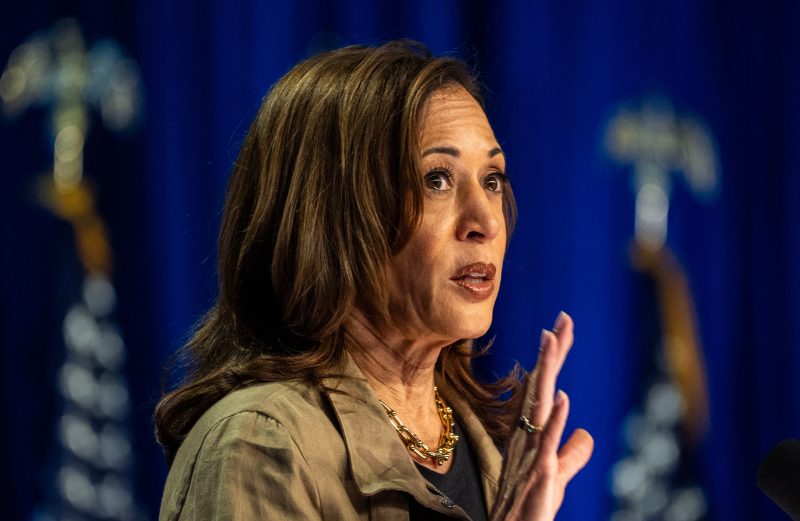In the realm of politics, the debate over economic policies and immigration reforms has long been a contentious issue. This is particularly evident in the stark contrast between the economic and border policies of Vice President Kamala Harris and former President Donald Trump. Their differing approaches reflect broader ideological divides within the political landscape, with potential implications for the future trajectory of the nation.
On the economic front, Vice President Harris has advocated for a robust package of social policies aimed at addressing income inequality and promoting social welfare programs. Her vision centers on creating a more equitable society through initiatives such as the expansion of healthcare coverage, raising the minimum wage, and investing in education and job training programs. These policies are intended to uplift marginalized communities and provide a safety net for those struggling to make ends meet.
In contrast, former President Trump’s economic agenda was characterized by a focus on deregulation, tax cuts, and a pro-business stance. His administration prioritized boosting economic growth through policies that were aimed at incentivizing investment and job creation. Trump’s approach resonated with many conservative voters who valued a free-market economy and believed in the potential of businesses to drive economic prosperity.
The differing economic philosophies of Harris and Trump underscore broader ideological differences between the Democratic and Republican parties. While Harris’s policies prioritize social welfare and income redistribution, Trump’s approach leans towards a more laissez-faire economic model that emphasizes individual initiative and limited government intervention. These opposing viewpoints have significant implications for issues such as wealth distribution, social mobility, and the role of government in shaping economic outcomes.
On the issue of immigration and border security, there is also a wide gulf between Harris and Trump. Harris has been a vocal advocate for comprehensive immigration reform that includes a pathway to citizenship for undocumented immigrants, border security measures that respect human rights, and a more humanitarian approach to immigration enforcement. Her policies are framed within the context of promoting diversity, inclusion, and compassion towards immigrants and refugees.
Trump, on the other hand, made immigration a central pillar of his presidency by adopting a hardline stance on border security and enforcement. His administration implemented policies such as the construction of a border wall, restrictions on legal immigration, and a crackdown on undocumented immigrants. Trump’s rhetoric often portrayed immigrants as a threat to national security and American workers, reflecting a nativist sentiment that resonated with his base.
The stark contrast between Harris and Trump on immigration reflects broader debates within American society about the value of diversity, the treatment of immigrants, and the role of the United States as a nation of immigrants. While Harris’s approach is rooted in inclusivity and compassion, Trump’s policies reflect a more isolationist and protectionist worldview that seeks to prioritize the interests of American citizens over those of immigrants.
In conclusion, the economic and border policies of Vice President Kamala Harris and former President Donald Trump reflect deep ideological divides within American politics. Harris’s focus on social welfare programs and comprehensive immigration reform stands in contrast to Trump’s emphasis on deregulation, tax cuts, and tough border security measures. These differing approaches have profound implications for issues such as income inequality, social welfare, immigration, and national identity, shaping the broader political landscape and potentially influencing the future direction of the nation.
